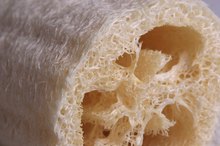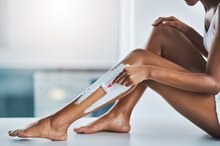What does fact checked mean?
At Healthfully, we strive to deliver objective content that is accurate and up-to-date. Our team periodically reviews articles in order to ensure content quality. The sources cited below consist of evidence from peer-reviewed journals, prominent medical organizations, academic associations, and government data.
The information contained on this site is for informational purposes only, and should not be used as a substitute for the advice of a professional health care provider. Please check with the appropriate physician regarding health questions and concerns. Although we strive to deliver accurate and up-to-date information, no guarantee to that effect is made.
How to Remove Ingrown Arm Hair
**An ingrown hair develops when hair grows back into the follicle 1. The body reacts as if a foreign body has entered the skin, resulting in redness, pain and inflammation. Although ingrown hairs are most common in young black males, they can affect any age or race. These bumps can be embarrassing and difficult to disguise. Ingrown hairs on your arms can be remedied at home.
Hold a warm compress or damp washcloth to the ingrown hair several times daily. This will help ease discomfort and encourage draining.
What Is the Difference Between Cellulitis & Mrsa?
Learn More
Use an over-the-counter medication to help slough away dead skin. Look for a product containing salicylic acid.
Exfoliate the affected area with a scrub or loofah while in the shower. Or use a soft toothbrush applied in a circular motion to help expose the ingrown hair.
How to Get Rid of Pimples on My Inner Thigh
Learn More
Gently insert a sterile needle under the loop of hairs embedded in your arm skin. Pull upward to dislodge hairs.
Wash with an antibacterial soap and apply a thin coating of antibiotic ointment to prevent infection.
Tips
To prevent ingrown hairs, the Go Ask Alice! website recommends using lotions that do not clog pores. Look for products labeled oil-free and “non-comedogenic.”
If the ingrown hair is the result of shaving, be sure to use a razor with a single blade. In addition, shave in the direction the hair grows. Consider switching to a hair removal lotion, cream or wax to minimize ingrown hairs.
To soothe an itchy ingrown hair, apply a hydrocortisone cream or oatmeal lotion.
Warnings
According to the U.S. National Library of Medicine, you should seek medical attention if an ingrown hair or infection persists for more than three days. A doctor can prescribe a retinoid cream to help exfoliate dead cells from the skin's surface. In addition, antibiotics can be used to treat any related infection.
Related Articles
References
- Go Ask Alice!: What Do I Do About All These Ingrown Hairs?
- U.S. National Library of Medicine: Folliculitis
- MedlinePlus. Acne.
- Cleveland Clinic. Ingrown hair. Updated February 28, 2018.
- Merck Manuals. Ingrown beard hairs. Updated October 2019.
- Cleveland Clinic. Ingrown hair: Management and treatment. Updated February 28, 2018.
- Ogunbiyi A. Pseudofolliculitis barbae; current treatment options. Clin Cosmet Investig Dermatol. 2019;12:241-247. doi:10.2147/CCID.S149250
- MedlinePlus. Folliculitis. Updated October 8, 2018.
- Zaenglein AL, Pathy AL, Schlosser BJ, Alikhan A, Baldwin HE, et. al. Guidelines of care for the management of acne vulgaris. Journal of the American Academy of Dermatology. 2016; 74(5): 945-73. doi:10.1016/j.jaad.2015.12.037
Writer Bio
Rose Erickson has been a professional writer since 2010. She specializes in fitness, parenting, beauty, health, nutrition and saving money, and writes for several online publications including The Krazy Coupon Lady. She is also a novelist and a mother of three.








